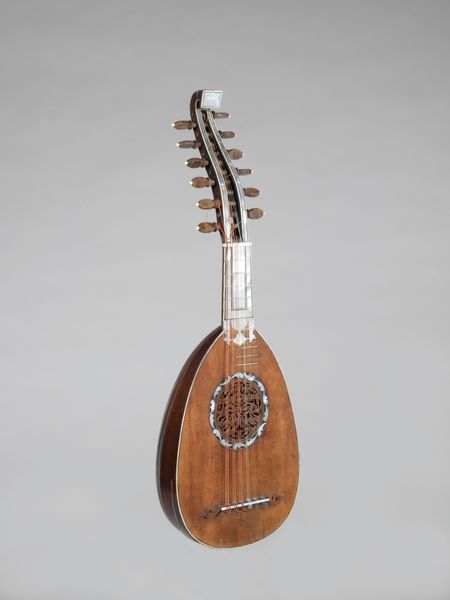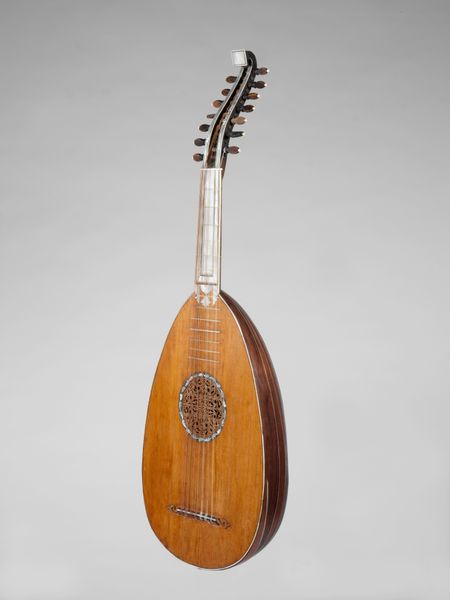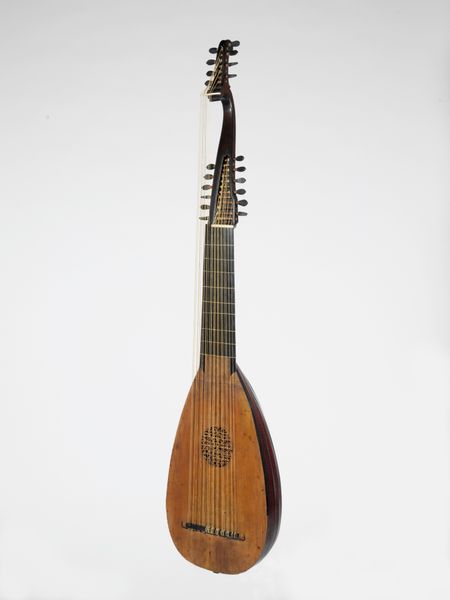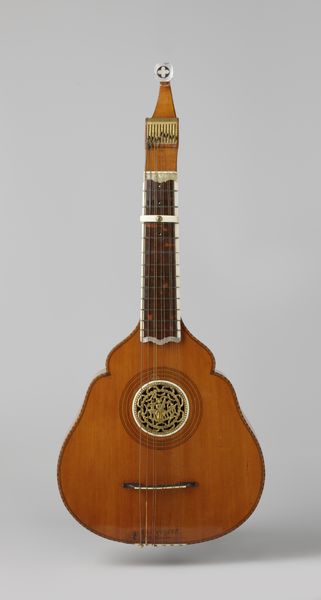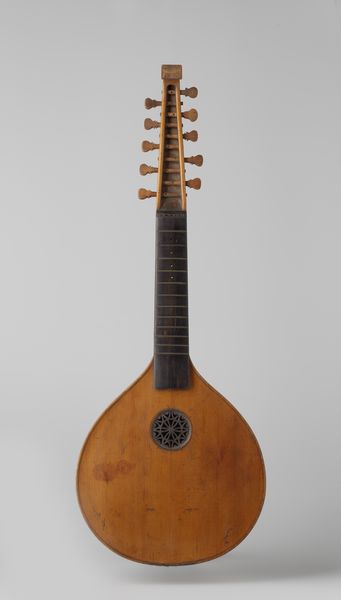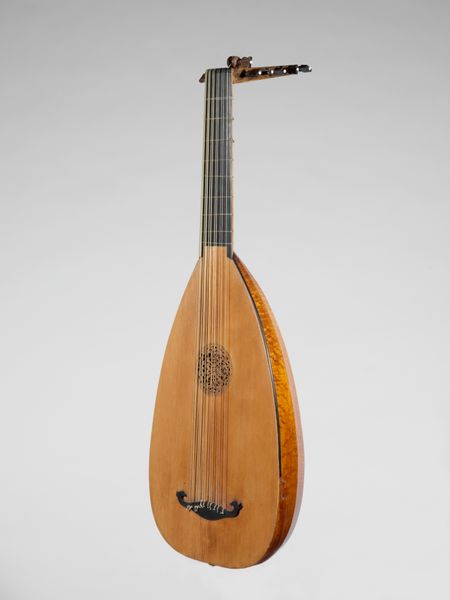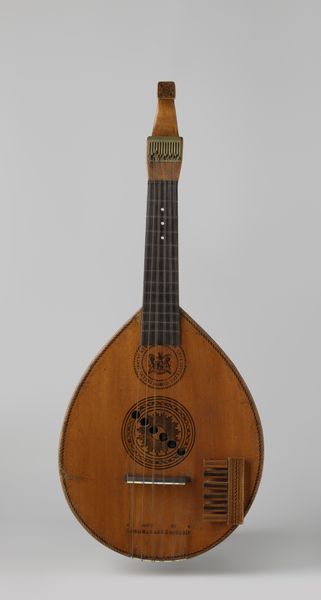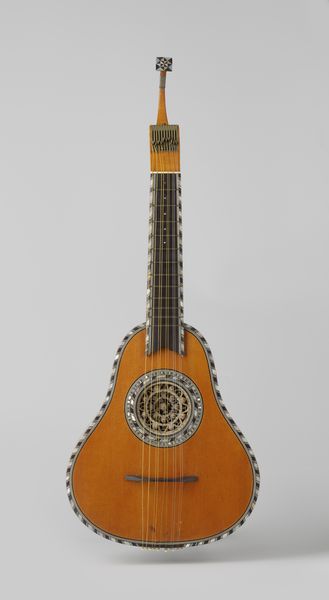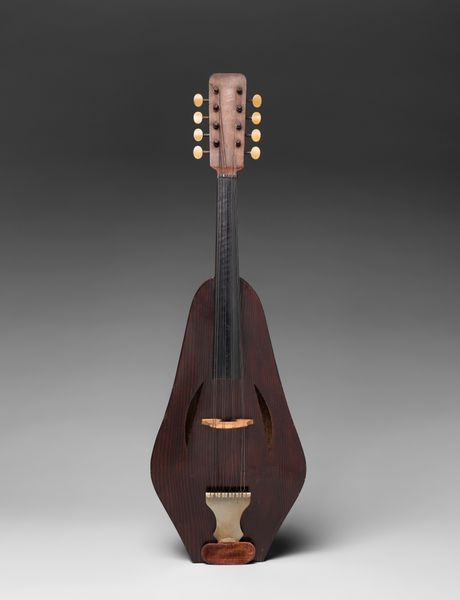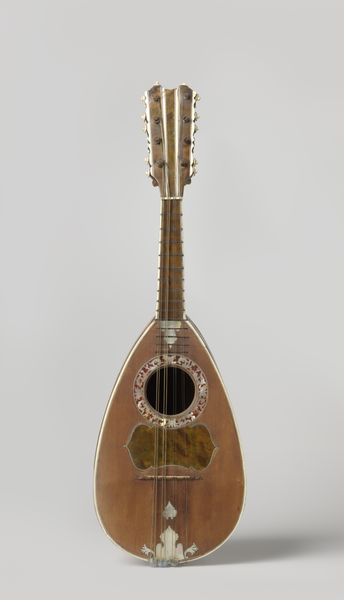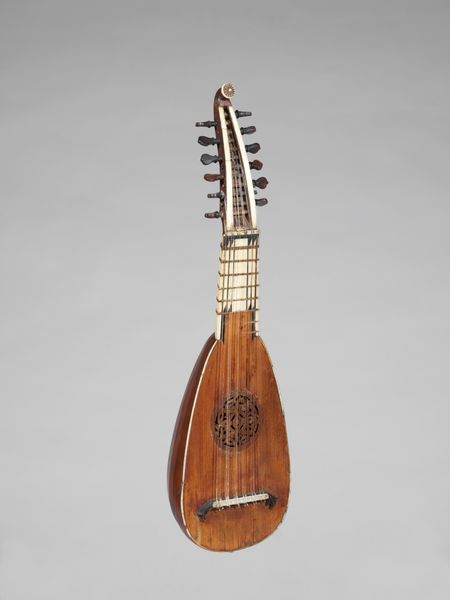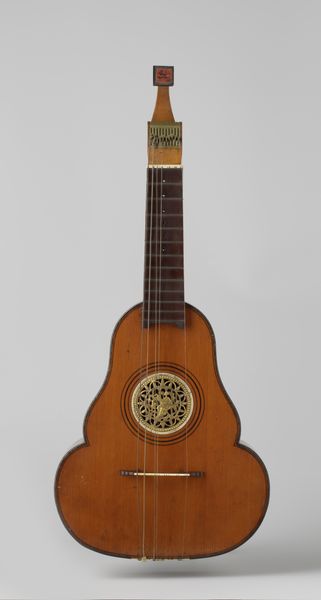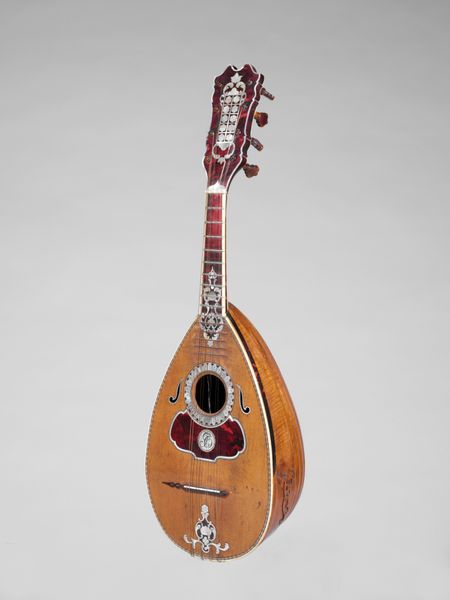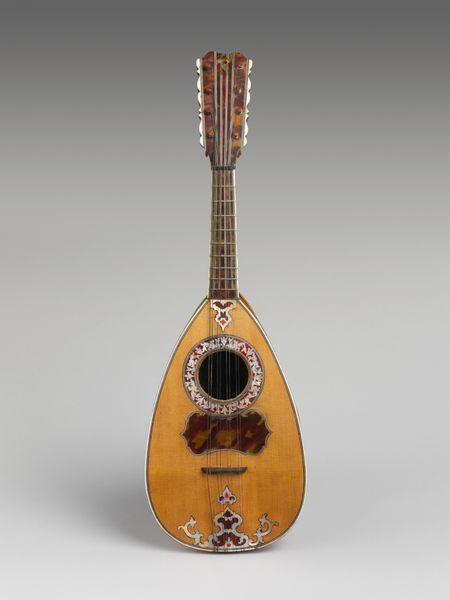
wood
#
baroque
#
wood
#
musical-instrument
#
decorative-art
Dimensions: L. 1 ft. 10 in., W. 8 in.
Copyright: Public Domain
This mandolin was crafted in Germany by Christian Nonnemacker during the mid-18th century, a time when Europe was embracing the elegance of the Rococo period. Musical instruments like this were more than mere objects; they were emblems of cultural identity and status. The mandolin, with its delicate sound, became particularly enmeshed with expressions of gender and class. The intricate detailing and refined craftsmanship suggest it was intended for the hands of someone of considerable wealth and social standing, likely a woman, for whom music was a cultivated accomplishment. This instrument also represents a complex narrative of access and exclusion, echoing the era's social hierarchies. Its very existence is a testament to the cultural values and artistic skills of the time, while also reminding us of the disparities in opportunity and expression that defined 18th-century society.
Comments
No comments
Be the first to comment and join the conversation on the ultimate creative platform.
